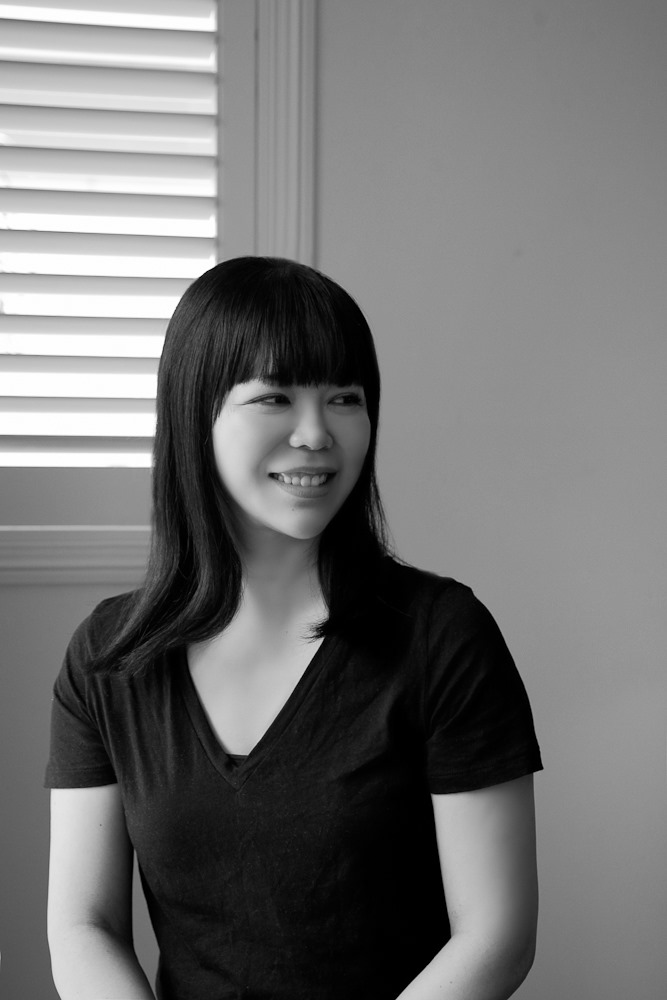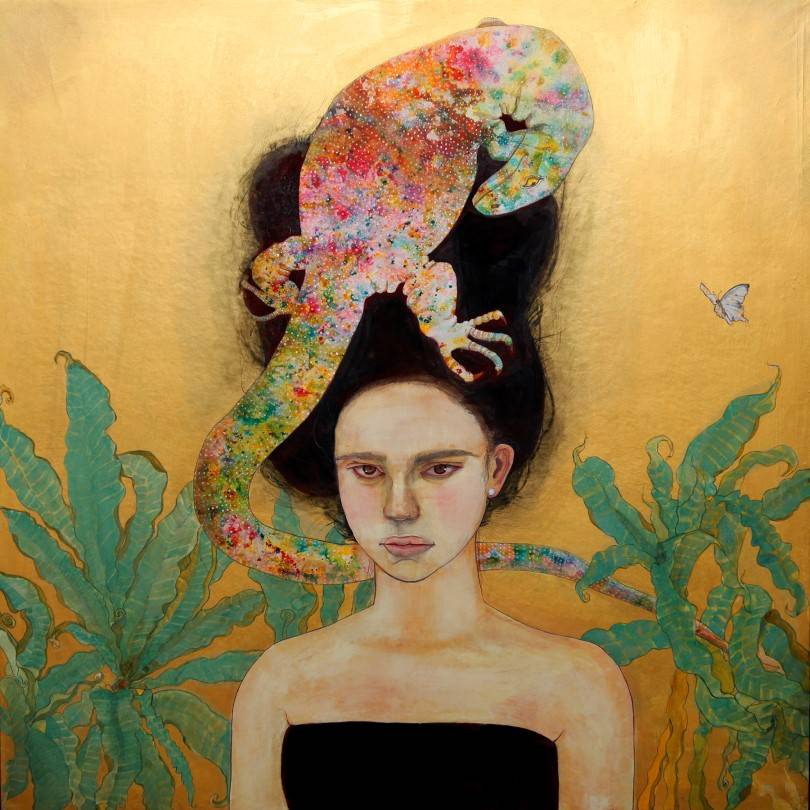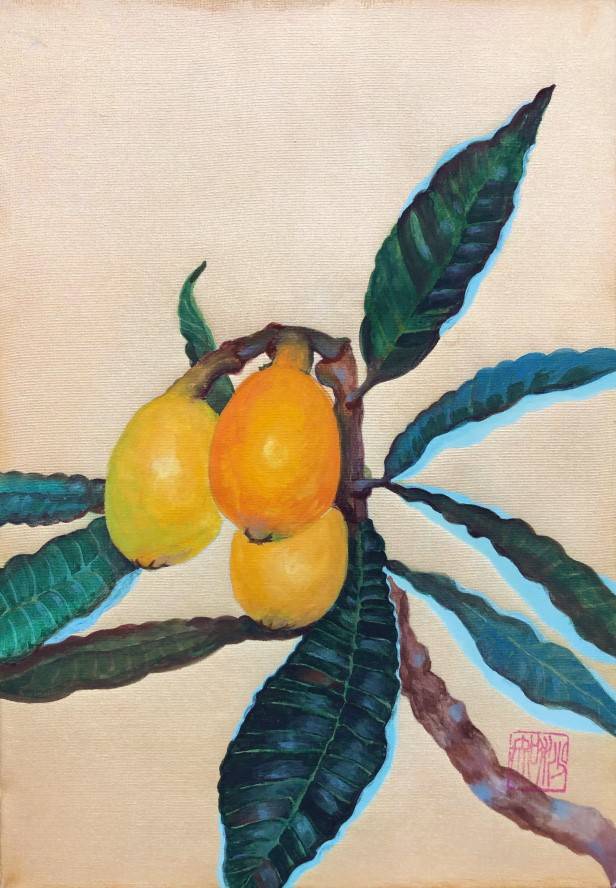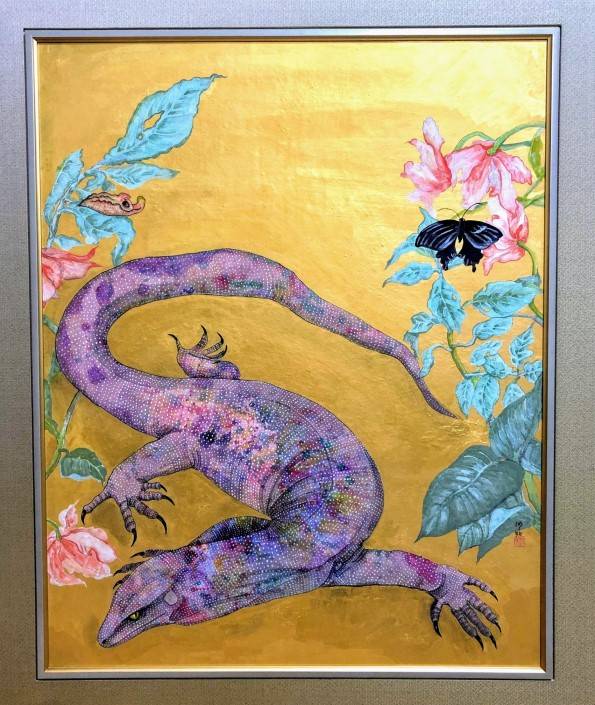
NEWS
Cat which travels through the world of painting, and how to preserve your feline cuteness forever in a work of art.
Seguite TRiCERA su Instagram e date un'occhiata ai nostri artisti creativi
5%OFF e spedizione gratuita 1° acquisto
FIRSTART5
10%OFF sul 2° acquisto dopo il 1°!
Benvenuti in TRiCERA
Hi there! Siamo lieti di averla qui 🎉
Potresti descriverti?
Ospite
 Sachi Oizumi, who lives in Australia, first studied oil painting and then began to study Japanese painting. Her work is characterized by a combination of Western oil painting and traditional Japanese painting styles. Having lived outside of Japan for a long time, she describes herself as "half Japanese, half foreign. It is this sensitivity to different cultures that allows him to create diverse works. How did you get started in Japanese painting? -I started Japanese painting after I moved to Australia. I found Japanese paintings in an antique store in Melbourne and thought they were beautiful. Even though I am Japanese myself, I found myself looking at Japan objectively when I was not in Japan. So when I lived abroad, I noticed the characteristics of Japanese painting. I think that Japanese painting is not only an expression of painting, but also a living organism. Maybe it's because they use organic materials, but I think the organic world is one of the most attractive aspects of Japanese painting.
Sachi Oizumi, who lives in Australia, first studied oil painting and then began to study Japanese painting. Her work is characterized by a combination of Western oil painting and traditional Japanese painting styles. Having lived outside of Japan for a long time, she describes herself as "half Japanese, half foreign. It is this sensitivity to different cultures that allows him to create diverse works. How did you get started in Japanese painting? -I started Japanese painting after I moved to Australia. I found Japanese paintings in an antique store in Melbourne and thought they were beautiful. Even though I am Japanese myself, I found myself looking at Japan objectively when I was not in Japan. So when I lived abroad, I noticed the characteristics of Japanese painting. I think that Japanese painting is not only an expression of painting, but also a living organism. Maybe it's because they use organic materials, but I think the organic world is one of the most attractive aspects of Japanese painting.  Samantha Summer Solstice, 116×116cm Painting materials and techniques are different between oil painting and Japanese-style painting. How did you get used to them? -Yes, I did. The way I make my paintings has changed a lot. In oil painting, inspiration is important and I relied on that. But Japanese painting requires a lot of patience. Preparation is everything, and each step is clearly defined. It's like a chess game where you have to think ahead and paint. My attitude toward my work as well as the process may have changed. It must be difficult to change your approach and the way you create. How did you adapt to it? -Yes, it may have been difficult. But when I moved to Australia, there was a time when I couldn't paint at all. I probably couldn't draw at all for about seven or eight years. Australia was rich in nature, so when I couldn't paint, I would go out and collect insects. Perhaps because of this, I became interested in the organic aspects of Japanese painting. Looking at the larger framework of organic things and the natural environment, the inspirational creations I had been doing up to that point seemed very narcissistic and small.
Samantha Summer Solstice, 116×116cm Painting materials and techniques are different between oil painting and Japanese-style painting. How did you get used to them? -Yes, I did. The way I make my paintings has changed a lot. In oil painting, inspiration is important and I relied on that. But Japanese painting requires a lot of patience. Preparation is everything, and each step is clearly defined. It's like a chess game where you have to think ahead and paint. My attitude toward my work as well as the process may have changed. It must be difficult to change your approach and the way you create. How did you adapt to it? -Yes, it may have been difficult. But when I moved to Australia, there was a time when I couldn't paint at all. I probably couldn't draw at all for about seven or eight years. Australia was rich in nature, so when I couldn't paint, I would go out and collect insects. Perhaps because of this, I became interested in the organic aspects of Japanese painting. Looking at the larger framework of organic things and the natural environment, the inspirational creations I had been doing up to that point seemed very narcissistic and small.  An Asian plum, 14×18cm Did that make you rethink your work? -Yes, I felt that I could see a wider world. From there, I began to ask myself, "What is a real painting? I thought then that I was comparing the works I made in my 20s and 60s with the works I made when I was in my 20s, which were better. That made me realize that I needed to face my paintings more seriously. What are your motifs or themes? -Lizzards often come to my house, so I sketch them and use them as motifs. I think the world of my paintings is rather abstract. I often use organic objects in the foreground so that the world can be seen in the background. I often use gold color because it is very convincing.
An Asian plum, 14×18cm Did that make you rethink your work? -Yes, I felt that I could see a wider world. From there, I began to ask myself, "What is a real painting? I thought then that I was comparing the works I made in my 20s and 60s with the works I made when I was in my 20s, which were better. That made me realize that I needed to face my paintings more seriously. What are your motifs or themes? -Lizzards often come to my house, so I sketch them and use them as motifs. I think the world of my paintings is rather abstract. I often use organic objects in the foreground so that the world can be seen in the background. I often use gold color because it is very convincing.  Jungle garden, 72×100cm Please tell us about your future activities. -I don't have much experience in Japanese-style painting yet, so I would like to learn more about it. Technique is very important in Japanese painting, so I would like to improve my skills. Also, although I am Japanese, I have been living abroad for a long time, so I am becoming more of a "half-Japanese" rather than a "full Japanese". I like old traditional paintings like those of Okyo Maruyama, and I would like to promote Japanese culture abroad.
Jungle garden, 72×100cm Please tell us about your future activities. -I don't have much experience in Japanese-style painting yet, so I would like to learn more about it. Technique is very important in Japanese painting, so I would like to improve my skills. Also, although I am Japanese, I have been living abroad for a long time, so I am becoming more of a "half-Japanese" rather than a "full Japanese". I like old traditional paintings like those of Okyo Maruyama, and I would like to promote Japanese culture abroad.
Scrittore
Shinzo Okuoka
 Sachi Oizumi, who lives in Australia, first studied oil painting and then began to study Japanese painting. Her work is characterized by a combination of Western oil painting and traditional Japanese painting styles. Having lived outside of Japan for a long time, she describes herself as "half Japanese, half foreign. It is this sensitivity to different cultures that allows him to create diverse works. How did you get started in Japanese painting? -I started Japanese painting after I moved to Australia. I found Japanese paintings in an antique store in Melbourne and thought they were beautiful. Even though I am Japanese myself, I found myself looking at Japan objectively when I was not in Japan. So when I lived abroad, I noticed the characteristics of Japanese painting. I think that Japanese painting is not only an expression of painting, but also a living organism. Maybe it's because they use organic materials, but I think the organic world is one of the most attractive aspects of Japanese painting.
Sachi Oizumi, who lives in Australia, first studied oil painting and then began to study Japanese painting. Her work is characterized by a combination of Western oil painting and traditional Japanese painting styles. Having lived outside of Japan for a long time, she describes herself as "half Japanese, half foreign. It is this sensitivity to different cultures that allows him to create diverse works. How did you get started in Japanese painting? -I started Japanese painting after I moved to Australia. I found Japanese paintings in an antique store in Melbourne and thought they were beautiful. Even though I am Japanese myself, I found myself looking at Japan objectively when I was not in Japan. So when I lived abroad, I noticed the characteristics of Japanese painting. I think that Japanese painting is not only an expression of painting, but also a living organism. Maybe it's because they use organic materials, but I think the organic world is one of the most attractive aspects of Japanese painting.  Samantha Summer Solstice, 116×116cm Painting materials and techniques are different between oil painting and Japanese-style painting. How did you get used to them? -Yes, I did. The way I make my paintings has changed a lot. In oil painting, inspiration is important and I relied on that. But Japanese painting requires a lot of patience. Preparation is everything, and each step is clearly defined. It's like a chess game where you have to think ahead and paint. My attitude toward my work as well as the process may have changed. It must be difficult to change your approach and the way you create. How did you adapt to it? -Yes, it may have been difficult. But when I moved to Australia, there was a time when I couldn't paint at all. I probably couldn't draw at all for about seven or eight years. Australia was rich in nature, so when I couldn't paint, I would go out and collect insects. Perhaps because of this, I became interested in the organic aspects of Japanese painting. Looking at the larger framework of organic things and the natural environment, the inspirational creations I had been doing up to that point seemed very narcissistic and small.
Samantha Summer Solstice, 116×116cm Painting materials and techniques are different between oil painting and Japanese-style painting. How did you get used to them? -Yes, I did. The way I make my paintings has changed a lot. In oil painting, inspiration is important and I relied on that. But Japanese painting requires a lot of patience. Preparation is everything, and each step is clearly defined. It's like a chess game where you have to think ahead and paint. My attitude toward my work as well as the process may have changed. It must be difficult to change your approach and the way you create. How did you adapt to it? -Yes, it may have been difficult. But when I moved to Australia, there was a time when I couldn't paint at all. I probably couldn't draw at all for about seven or eight years. Australia was rich in nature, so when I couldn't paint, I would go out and collect insects. Perhaps because of this, I became interested in the organic aspects of Japanese painting. Looking at the larger framework of organic things and the natural environment, the inspirational creations I had been doing up to that point seemed very narcissistic and small.  An Asian plum, 14×18cm Did that make you rethink your work? -Yes, I felt that I could see a wider world. From there, I began to ask myself, "What is a real painting? I thought then that I was comparing the works I made in my 20s and 60s with the works I made when I was in my 20s, which were better. That made me realize that I needed to face my paintings more seriously. What are your motifs or themes? -Lizzards often come to my house, so I sketch them and use them as motifs. I think the world of my paintings is rather abstract. I often use organic objects in the foreground so that the world can be seen in the background. I often use gold color because it is very convincing.
An Asian plum, 14×18cm Did that make you rethink your work? -Yes, I felt that I could see a wider world. From there, I began to ask myself, "What is a real painting? I thought then that I was comparing the works I made in my 20s and 60s with the works I made when I was in my 20s, which were better. That made me realize that I needed to face my paintings more seriously. What are your motifs or themes? -Lizzards often come to my house, so I sketch them and use them as motifs. I think the world of my paintings is rather abstract. I often use organic objects in the foreground so that the world can be seen in the background. I often use gold color because it is very convincing.  Jungle garden, 72×100cm Please tell us about your future activities. -I don't have much experience in Japanese-style painting yet, so I would like to learn more about it. Technique is very important in Japanese painting, so I would like to improve my skills. Also, although I am Japanese, I have been living abroad for a long time, so I am becoming more of a "half-Japanese" rather than a "full Japanese". I like old traditional paintings like those of Okyo Maruyama, and I would like to promote Japanese culture abroad.
Jungle garden, 72×100cm Please tell us about your future activities. -I don't have much experience in Japanese-style painting yet, so I would like to learn more about it. Technique is very important in Japanese painting, so I would like to improve my skills. Also, although I am Japanese, I have been living abroad for a long time, so I am becoming more of a "half-Japanese" rather than a "full Japanese". I like old traditional paintings like those of Okyo Maruyama, and I would like to promote Japanese culture abroad.
Scrittore
Shinzo Okuoka